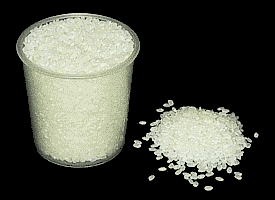Here is my thoughts about Japanese Food.
Yeah, Japanese foods even have a soul. Do you believe that eating a bowl of ramen can influence your mood? In making ramen, a chef's emotion will transform into the food taste. When a chef is sad, people who eat ramen the chef made, will be sad, too. That is why people said Japanese foods have a soul.
Japanese foods are beautiful, that is why you are suggested to enjoy them with your eyes first, before starting to distribute them to your stomach. The colors arrangement in the dishes you enjoy is based on the colors of four seasons. This is the only way to feel Japan's seasons without going there!
Japanese people call it a harmony, which is born from Japanese enjoyment of artistic sense and beauty. Through Japanese foods, you can feel the cherry blossoms bloom in spring, the colorful leaves in fall season, and the warmth of the sun in summer. Find tuna, herring, and bamboo shoots in summer, or chestnuts and matsuake mushroom in autumn. They are not only good in your eyes, but also good for your health!
According to some results of a research, Japanese people have lower rates of heart disease than most other countries. They are also have longer age! Many Japanese people can reach more than 100 years of age, and they can even work normally as the young. The secret may be their diet. There is no doubt to say Japanese cuisines are one of the healthiest in the world!
Japanese foods and Japanese restaurants have been spread all over the world, and they are so famous. You may be eating a bowl of soba and miso, having sushi, or enjoying a cup of green tea right now. Here is some important information about the content of Japanese food ingredients you should read!
SEAWEED - It is divided into three kinds: nori, wakame, and konbu. You can find seaweed in sushi and onigiri. It is in a form of dark green sheets, so it is usually used to wrap those dishes. Seaweed contains high minerals, vitamins A, C, B12, and protein.
GINGER - This highly aromatic root is usually added to heat the soups, stir fries and sushi. Ginger has many benefits. It can lower cholesterol, prevent arthritis, and help those who have risk of blood clots since it contains a compound which is able to stop platelets sticking together.
FISH - We are suggested to eat two portions of oily fish per week. The Omega 3 contained in oily fish is so beneficial for heart health. Sushi has many various, and some various made of fish. That is why Japanese people live longer. Consuming fish makes their heart healthy. A study done by Akira Skikawa shows that the Japanese live in Japan have 45% Omega 3 in the bloodstream than the Japanese who live in other countries. Their bloodstream even has 80% more omega oils than Americans'! Eating fish daily can also improve brain function. See how old aged-Japanese can do anything well as the young ones.
TOFU - It is known as an ideal food for those who are in meatless diet. It contains low fat and high protein. The soft taste of tofu is delicious, versatile, and inexpensive! It is even cholesterol free, so it will be good for your heart. Tofu is also rich of calcium, which is helpful in preventing accelerated bone loss, such as in menopause.
SHITAKE MUSHROOM - For more than 6000 years, shiitake mushrooms are used as medicine. No need to doubt the function of adding shitake to your dishes! Get delicious taste of shitake mushrooms, and let them invigorate your immune system and fight illnesses. They are rich of antioxidant!
GREEN TEA - Have a cup of green tea in your leisure time, or put it on your work desk. Green tea can help you prevent cancer cells forming. It can also decrease the cholesterol levels in your blood. Consuming green tea will lower the risk of heart disease and stroke.
Now, what are you waiting for? Go to Japanese restaurant, order some foods, enjoy the beautiful serving, and get the benefits!






















